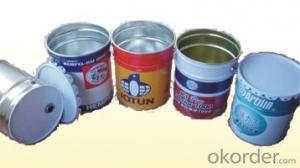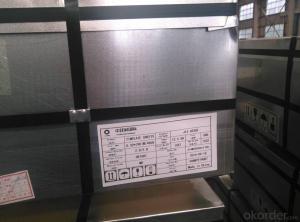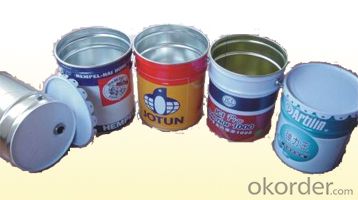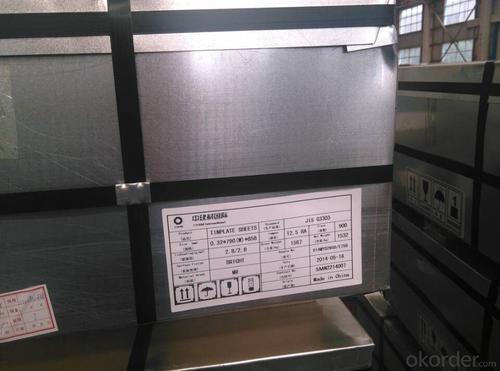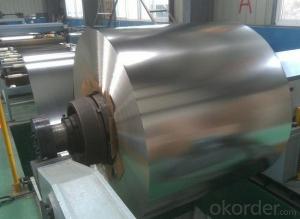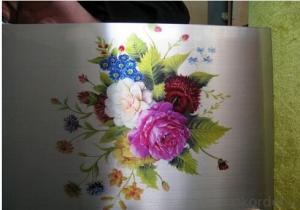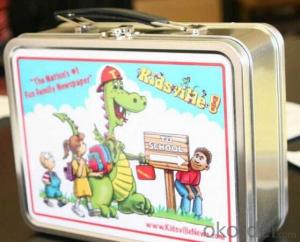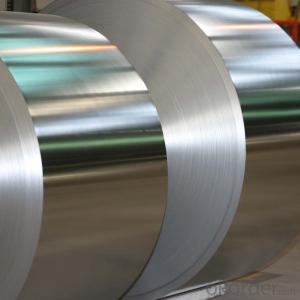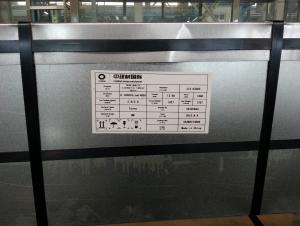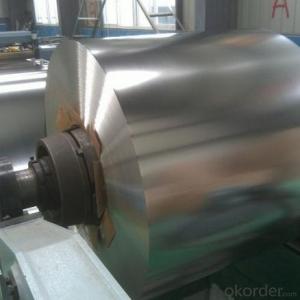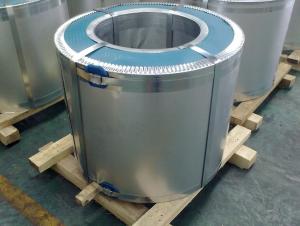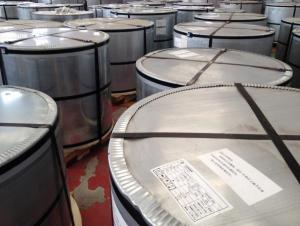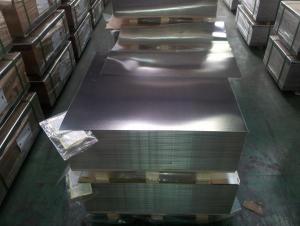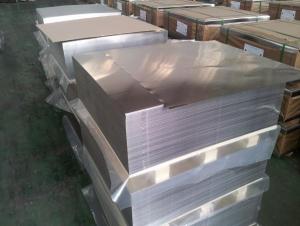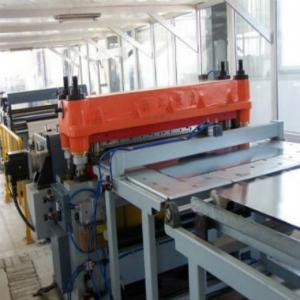Tinplate For Aerosol Cans, Dome & Cone, MR Material
- Loading Port:
- Tianjin
- Payment Terms:
- TT OR LC
- Min Order Qty:
- 25 m.t.
- Supply Capability:
- 40000 m.t./month
OKorder Service Pledge
OKorder Financial Service
You Might Also Like
1.Usage
Tinplate is widely used for making all types of containers, containing industrial usage such as paint can, oil can, aerosol cans etc., and food cans like milk powder cans, tomato paste can, dry food cans etc.
2. Specification
standard: GB/T2520, JIS G3303, DIN EN10202
Material: MR /SPCC
Thickness available: 0.16-0.50MM
Width available: 600~1050MM
Temper grade: T1 – DR8
Tin coating: ordinary 2.8g/2.8g, 5.6g/5.6g and others
Package: sea worthy export package.
Applications: Tin can for chemicals & paint cans, industrial cans, food cans
3. Our factory photo & equipments

4. FAQ
a. what's the annual output?
about 500,000 tons per year, both BA&CA, SR&DR, thickness 0.17~0.50mm, temepr T1~DR8
b. where's the raw matrial from?
our hot rolled coil is purchased from Bao Steel, Capital Steel etc.
c. how long is the delivery time?
normally for SPCC about 45~55 days, while 65~75 days for MR material
d. how to control the quality during production process?
inside our workshop, we have MES syestem. It realizes the optimization of the production procedure in the workshop. It could record each step of the whole production procedures, and if some problem appears, factory could easily found and take action, it’s quite helpful to monitor and control the quality.
- Q: What are the advantages of using tinplate?
- There are several advantages of using tinplate. Firstly, tinplate provides excellent protection against corrosion, making it ideal for packaging food and beverages. It also has a high strength-to-weight ratio, making it lightweight yet durable. Additionally, tinplate is easily recyclable, making it a sustainable choice. It can be easily shaped and formed into various designs, making it versatile for packaging purposes. Lastly, tinplate provides a visually appealing and glossy finish, enhancing the overall aesthetic appeal of the product.
- Q: What are the main factors influencing the demand for tinplate?
- The main factors influencing the demand for tinplate include the growth in the packaging industry, consumer preferences for canned goods, economic development in emerging markets, and environmental regulations promoting sustainable packaging.
- Q: What are the main challenges in tinplate transportation?
- The main challenges in tinplate transportation include ensuring the proper handling and protection of tinplate materials to prevent damage or deformation during transit, managing the weight and size of the products to optimize shipping costs, and addressing any potential corrosion risks that may arise due to exposure to moisture or other environmental factors. Additionally, coordinating logistics and finding efficient transportation methods to ensure timely delivery and minimize any disruptions in the supply chain are also key challenges in tinplate transportation.
- Q: Tin cans and tin cans, which is good?
- I think this question is not asked to tin tin, chrome tin and galvanized tin which is the best? Of course, the best is galvanized iron. The second is the tin tin, followed by chrome tin, iron box is made finally.
- Q: What are the main differences between tinplate and tinplate laminates in terms of barrier properties?
- Tinplate and tinplate laminates differ in terms of their barrier properties. Tinplate, which is made of a single layer of tin-coated steel, offers good barrier properties against moisture and gases. It provides a reliable protective barrier for food and beverage packaging. On the other hand, tinplate laminates consist of tinplate combined with other materials, such as plastic or paper. These laminates can enhance the barrier properties of tinplate, offering additional protection against light, oxygen, and other external factors. The use of laminates allows for customized packaging solutions that cater to specific product requirements. Overall, tinplate laminates provide a higher level of barrier protection compared to plain tinplate.
- Q: What is the purpose of tin coating on tinplate?
- The purpose of tin coating on tinplate is to provide a protective barrier against corrosion, as tin is highly resistant to oxidation. Additionally, the tin coating enhances the appearance of the tinplate and allows for easy soldering, making it suitable for various applications such as food packaging and decorative items.
- Q: What are the common challenges in recycling tinplate packaging?
- Some common challenges in recycling tinplate packaging include the separation of tinplate from other materials, such as plastic or paper, which can be time-consuming and costly. Additionally, the removal of any residual contents or labels from the tinplate can be challenging. The recycling process may also be complicated by the presence of coatings or laminations on the tinplate. Finally, the availability of recycling facilities specifically equipped to handle tinplate packaging can be limited, leading to logistical difficulties in the recycling process.
- Q: What are the main factors affecting tinplate coil surface quality?
- The main factors affecting tinplate coil surface quality include the cleanliness of the steel substrate, the quality of the tin coating, the level of oil or grease residues, and the presence of any defects or imperfections on the surface. Additionally, factors such as the processing conditions during manufacturing, handling and storage practices, and the environment in which the tinplate is exposed can also impact the surface quality.
- Q: What are the different types of tinplate surface treatments?
- The different types of tinplate surface treatments include electrolytic tinplate (ETP), tin-free steel (TFS), and blackplate.
- Q: Can tinplate be used for non-packaging applications?
- Yes, tinplate can be used for non-packaging applications. Tinplate's excellent corrosion resistance, ductility, and formability make it suitable for various non-packaging uses such as automotive parts, construction materials, electrical components, and decorative purposes.
Send your message to us
Tinplate For Aerosol Cans, Dome & Cone, MR Material
- Loading Port:
- Tianjin
- Payment Terms:
- TT OR LC
- Min Order Qty:
- 25 m.t.
- Supply Capability:
- 40000 m.t./month
OKorder Service Pledge
OKorder Financial Service
Similar products
Hot products
Hot Searches
Related keywords
